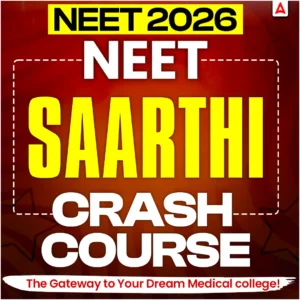The National Testing Agency is expected to conduct the NEET 2026 Exam at various exam centers across the nation in May 2026. All the aspirants preparing for the exam need to study about the topics and chapters mentioned in the NEET Syllabus 2026. One of the important chapters mentioned in the NEET Physics Syllabus 2026 is Atoms and Nuclei Chapter, therefore, in this article, we have added the NEET Physics MCQs for Atoms and Nuclei Chapter. Candidates studying this chapter can now scroll down in the article to check and access the MCQs.
NEET Physics MCQs for Atoms and Nuclei Chapter
A typical “Atoms and Nuclei” chapter overviews the fundamental structure of the atom, explaining the central, positively charged nucleus (containing protons and neutrons) and the orbiting, negatively charged electrons. It delves into nuclear physics, covering concepts like mass number (A) and atomic number (Z), nuclear forces, binding energy and mass defect (E=mc²), and key phenomena such as radioactivity, nuclear fission, and nuclear fusion. The chapter also explores atomic models, isotopes, and the differences in the composition of various atomic nuclei.
Preparing for the NEET Physics exam requires a strong understanding of fundamental concepts. The “Atoms and Nuclei” chapter is a high-yield topic, as it’s a mix of conceptual and numerical questions. Mastering this chapter can significantly boost your score.
Importance of Solving NEET Physics MCQs for Atoms and Nuclei
The Atoms and Nuclei chapter is a very important unit in NEET Physics, covering the basic structure of atoms, nuclear properties, radioactivity, and nuclear reactions. Questions from this chapter test both conceptual clarity and numerical problem-solving ability. A strong grip on this chapter ensures you do not miss out on easy yet high-scoring questions in the NEET exam. Practicing MCQs for this chapter is crucial because:
- Strengthens Conceptual Clarity: You revise key concepts such as Bohr’s model, energy levels, atomic spectra, mass-energy equivalence, and nuclear binding energy.
- Improves Numerical Speed: Regular practice improves your calculation skills for problems involving the energy of photons, nuclear fission, fusion, and half-life.
- Builds Confidence for Direct-Formula Questions: Many NEET questions are direct and formula-based from this chapter, so consistent practice ensures accuracy.
- Enhances Problem-Solving Skills: This chapter has a mix of theoretical and numerical problems; practicing MCQs helps you balance both.
- Reduces Negative Marking: MCQ practice teaches you to eliminate wrong options logically, minimizing mistakes in the final exam.
Key Topics in Atoms and Nuclei for NEET
All the students preparing for the Atoms and Nuclie Chapter must first complete their exam preparations by studying all the topics mentioned in the chapter. Below, we have mentioned an list of key topics in Atoms and Nuclie for NEET:
- Atoms:
- Rutherford’s scattering experiment
- Bohr’s model of hydrogen atom
- Energy levels and line spectra
- Rydberg formula
- De Broglie wavelength of electrons in Bohr’s orbits
- Nuclei:
- Composition and properties of nucleus (mass, charge, size)
- Nuclear density and binding energy
- Radioactivity – α, β, and γ decay
- Law of radioactive decay and half-life
- Nuclear fission and fusion
- Mass defect and energy release (Einstein’s mass-energy relation)
NEET Physics MCQs on Atoms and Nuclei Chapter
The aspirants who are looking forward to appear for the NEET Exam must start preparing for the exam by solving more and more Atoms and Nuclei MCQs as listed below:
Question 1. According to Rutherford’s model of the atom, most of the mass of an atom is concentrated in:
(a) Electrons
(b) Neutrons
(c) Protons
(d) Nucleus
Answer: (d) Nucleus
Question 2. The energy of an electron in the first orbit of hydrogen atom is:
(a) –13.6 eV
(b) –3.4 eV
(c) –1.51 eV
(d) –0.85 eV
Answer: (a) –13.6 eV
Question 3. The ratio of kinetic energy to total energy of an electron in Bohr’s orbit is:
(a) 1
(b) 2
(c) –1
(d) –2
Answer: (b) 2
Question 4. The radius of the second Bohr orbit is:
(a) r₂ = 4r₁
(b) r₂ = 2r₁
(c) r₂ = r₁/2
(d) r₂ = r₁
Answer: (a) r₂ = 4r₁
Question 5. The de Broglie wavelength of an electron in the first Bohr orbit is:
(a) λ = 2πr₁
(b) λ = πr₁
(c) λ = r₁/2
(d) λ = r₁/π
Answer: (a) λ = 2πr₁
Question 6. A photon has energy 3.0 × 10⁻¹⁹ J. Its frequency is:
(a) 4.5 × 10¹⁴ Hz
(b) 6.0 × 10¹⁴ Hz
(c) 7.5 × 10¹⁴ Hz
(d) 9.0 × 10¹⁴ Hz
Answer: (b) 6.0 × 10¹⁴ Hz
(Using E = hν)
Question 7. The wavelength of the first line of Lyman series for hydrogen is:
(a) 912 Å
(b) 6563 Å
(c) 1216 Å
(d) 4861 Å
Answer: (c) 1216 Å
Question 8. The binding energy per nucleon is maximum for:
(a) Deuterium
(b) Uranium
(c) Iron
(d) Helium
Answer: (c) Iron
Question 9. Nuclear density is independent of:
(a) Mass number
(b) Charge number
(c) Radius of nucleus
(d) Binding energy
Answer: (a) Mass number
Question 10. The half-life of a radioactive sample is 30 min. The time taken for the sample to reduce to 1/8 of its original mass is:
(a) 30 min
(b) 60 min
(c) 90 min
(d) 120 min
Answer: (c) 90 min
Question 11. Activity of a radioactive sample becomes one-fourth of its initial value in 40 min. Its half-life is:
(a) 10 min
(b) 20 min
(c) 40 min
(d) 80 min
Answer: (b) 20 min
Question 12. If decay constant λ = 0.693 s⁻¹, the half-life is:
(a) 0.693 s
(b) 1 s
(c) 2 s
(d) 0.5 s
Answer: (b) 1 s
Question 13. The energy released when 1 amu of mass is completely converted into energy is:
(a) 9 × 10¹³ J
(b) 1.6 × 10⁻¹⁹ J
(c) 3 × 10⁸ J
(d) 9 × 10¹⁶ J
Answer: (a) 9 × 10¹³ J
Question 14. Which of the following is a nuclear fusion reaction?
(a) Splitting of uranium-235
(b) Combination of deuterium and tritium
(c) Emission of α-particle from nucleus
(d) β-decay of neutron
Answer: (b) Combination of deuterium and tritium
Question 15. In nuclear fission of ¹²³U, the energy release per fission is approximately:
(a) 2 MeV
(b) 20 MeV
(c) 200 MeV
(d) 2000 MeV
Answer: (c) 200 MeV
Question 16. A radioactive sample has activity 800 dps. After 3 half-lives, its activity will be:
(a) 400 dps
(b) 200 dps
(c) 100 dps
(d) 50 dps
Answer: (c) 100 dps
Question 17. If the binding energy of helium-4 nucleus is 28.4 MeV, the binding energy per nucleon is:
(a) 7.1 MeV
(b) 14.2 MeV
(c) 3.55 MeV
(d) 1.77 MeV
Answer: (a) 7.1 MeV
Question 18. A sample of radioactive substance decays to 1/16th of its original amount in 40 days. Its half-life is:
(a) 10 days
(b) 20 days
(c) 40 days
(d) 80 days
Answer: (a) 10 days
Question 19. If a nucleus emits an α-particle, its atomic number:
(a) Increases by 2
(b) Decreases by 2
(c) Decreases by 4
(d) Remains unchanged
Answer: (b) Decreases by 2
Question 20. If a nucleus emits a β-particle, its mass number:
(a) Increases by 1
(b) Decreases by 1
(c) Remains the same
(d) Decreases by 2
Answer: (c) Remains the same
Year Wise NEET Physics MCQs for Atoms and Nuclei Chapter
In the table listed below, we have added the year wise NEET Physics MCQs for Atoms and Nuclei Chapter so that all the students can start preparing accordingly. Click on the links below:
| Year Wise NEET Physics MCQs for Atoms and Nuclei Chapter | |
| Year | Links |
| 2014 | Click Here |
| 2015 | Click Here |
| 2016 | Click Here |
| 2017 | Click Here |
| 2018 | Click Here |
| NEET Physics Chapters | MCQ Link |
|---|---|
| Physics and Measurement | Click Here |
| Kinematics | Click Here |
| Laws of Motion | Click Here |
| Work, Energy, and Power | Click Here |
| Rotational Motion | Click Here |
| Gravitation | Click Here |
| Properties of Solids and Liquids | Click Here |
| Thermodynamics | Click Here |
| Kinetic Theory of Gases | Click Here |
| Oscillation and Waves | Click Here |
| Electrostatics | Click Here |
| Current Electricity | Click Here |
| Magnetic Effects of Current and Magnetism | Click Here |
| Electromagnetic Induction and Alternating Currents | Click Here |

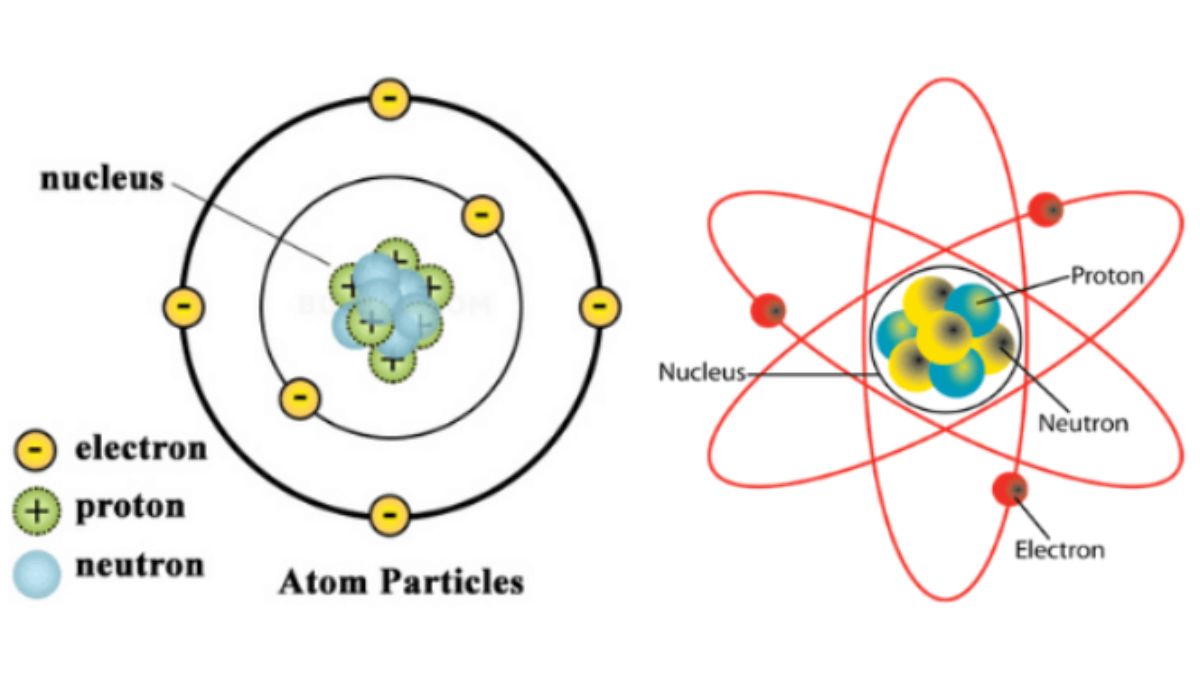
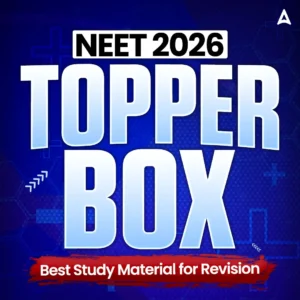







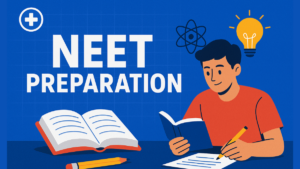 NEET Preparation Strategy 2026: Detailed...
NEET Preparation Strategy 2026: Detailed...
 Free NEET Sample Papers 2026 PDF | Downl...
Free NEET Sample Papers 2026 PDF | Downl...
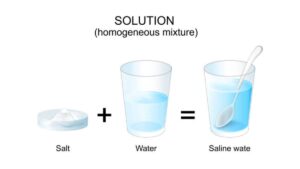 Salt Analysis NEET Notes, Check Importan...
Salt Analysis NEET Notes, Check Importan...
